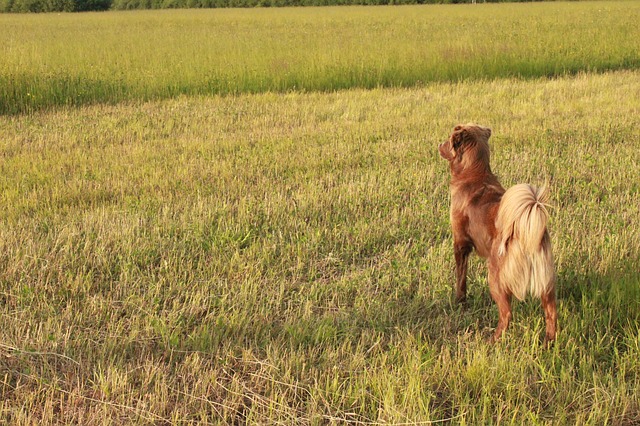Short, long, puffy, curly, they’re all different, but all dogs have ’em! We know dogs wag their tails when they’re happy, but did you know that their tails can convey other messages? Or that communication isn’t a tail’s only use?
Get ready to be intrigued, because chances are, you’ve never thought about your pup’s wagger like this before! Here are 10 fun facts about dog tails–as it turns out, they’re more than just a cute accessory!

1. Tail wagging is a social cue.
According to Animal Planet, studies have shown that dogs do not wag their tails when they’re alone, only displaying the gesture when around other humans and other animals. (Note: this means that dogs with docked tails have a difficult time using this mode of communication. Likewise, other dogs have a hard time reading the social cues of tail-less pups.)

2. And it’s not a behavior that’s developed right away.
Animal planet explains that puppies don’t start wagging until they are about a month and a half old. Then, they practice with their first audience: their litter mates and their mom!
3. Tail wagging can display happiness–but what else can it mean?
Certain types of wags can indicate certain emotions. According to Psychology Today:
- The slight wags when meeting newcomers can offer a tentative greeting
- A high-sitting tail making a short, fast back-and-forth motion can be the display of a threat
- A broad, swishing wag is friendly and unchallenging
- The slow wag of a tail “half-mast” is neutral, neither excited nor anxious.

4. And the height a dog holds its tail, as well as the speed it wags, indicates certain messages, too.
Check out a great chart, plus an explanation, on Paws First Choice.
5. Even the direction that the tail is wagging means something.
The direction of a dog’s swishing tail corresponds to the hemisphere that’s been activated in its brain, says the Washington Post. If you’re looking at a dog and her tail is wagging to the right, she is pleased, relaxed, and/or happy; if a dog’s tail is oriented to the left, she is nervous, anxious, perhaps threatened. This nuance can be tricky for us humans to pick up on, but for fellow canines, the message is crystal-clear.
6. The tail was evolved for more than just communication. It might have been used to help dogs with balance.
According to AOL News, dogs have long since discovered that this appendage to be a handy balancing aid when walking along tedious and narrow paths.

7. Tails can even help propel natural-born swimmers through the water.
AOL also notes that some dogs, particularly retrievers, use their tails like a rudder, steering them through the water.
8. Dogs can chase their tails for multiple reasons.
Dr. Kathryn Primm for iHeartDogs explains that obsessive and continuous tail-chasing may be a sign of Obsessive Compulsive Disorder (OCD). Pet Finder says that anxiety, curiosity, boredom, prey drive, and even fleas can also be culprits. Bottom line: the occasional tail-chase is normal.

9. Tails are an extension of the spine.
However, this section is more flexible, and has its own set of muscles and discs, according to AOL.
10. They also help dogs spread their scents.
Alpha dogs, with their tails held high, can release more scent from the anal glands, explains Animal Planet. Scared dogs hold their tails between their legs, submissively covering their scent glands. The swoosh of a tail also helps fan the smell into the air.

